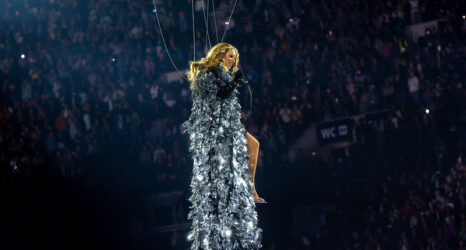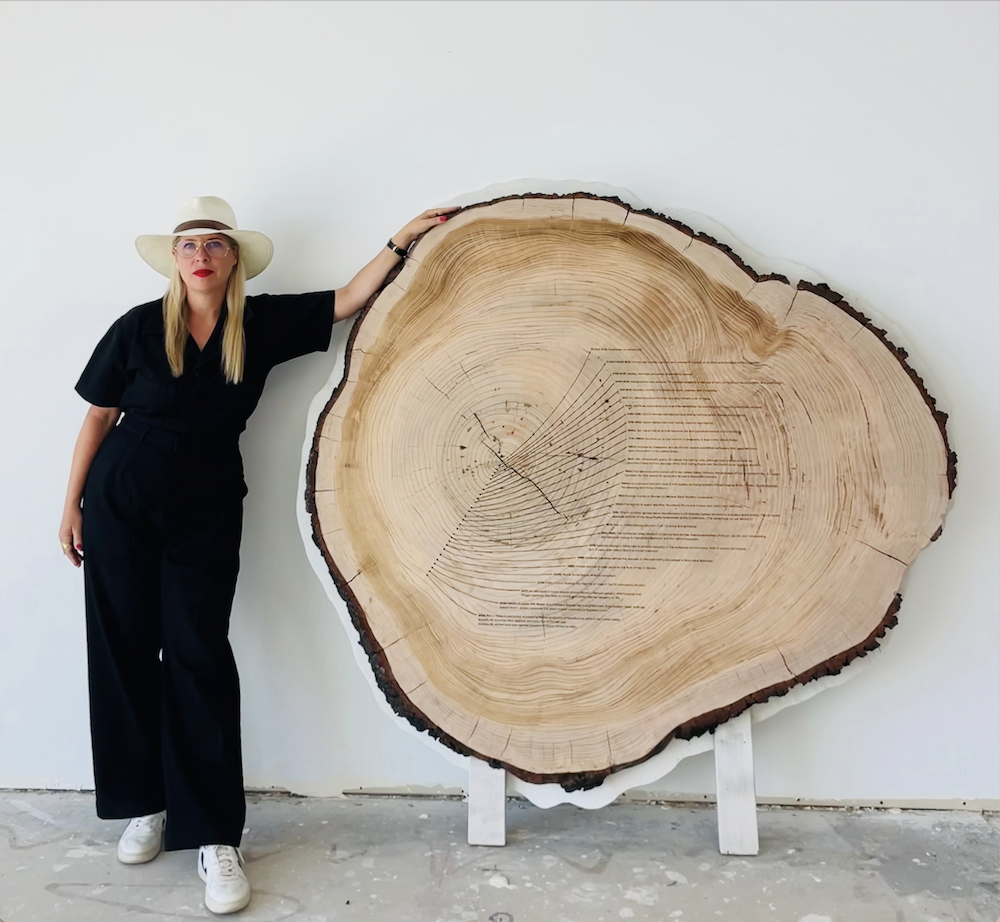The Brandywine River Museum of Art in Chadds Ford, Pa. is best known for its permanent display featuring the prolific Wyeth (N. C., Andrew and Jaime) family’s art. But, now through June 2020, visitors will also be able to travel back in time to the turn of the 20th century in special exhibition on the third floor of this beautiful, majestic museum.
Votes for Women: A Visual History provides museum guests with an opportunity to celebrate the centennial anniversary of the passage of the 19th Amendment, guaranteeing American women’s constitutional right to vote. (Ratified on August 26, 1920, the 19th Amendment established the right to vote for all women, yet, in practice, many women of color remained disenfranchised for decades longer as a result of Jim Crow laws, gerrymandering and voter suppression tactics employed to this day.)
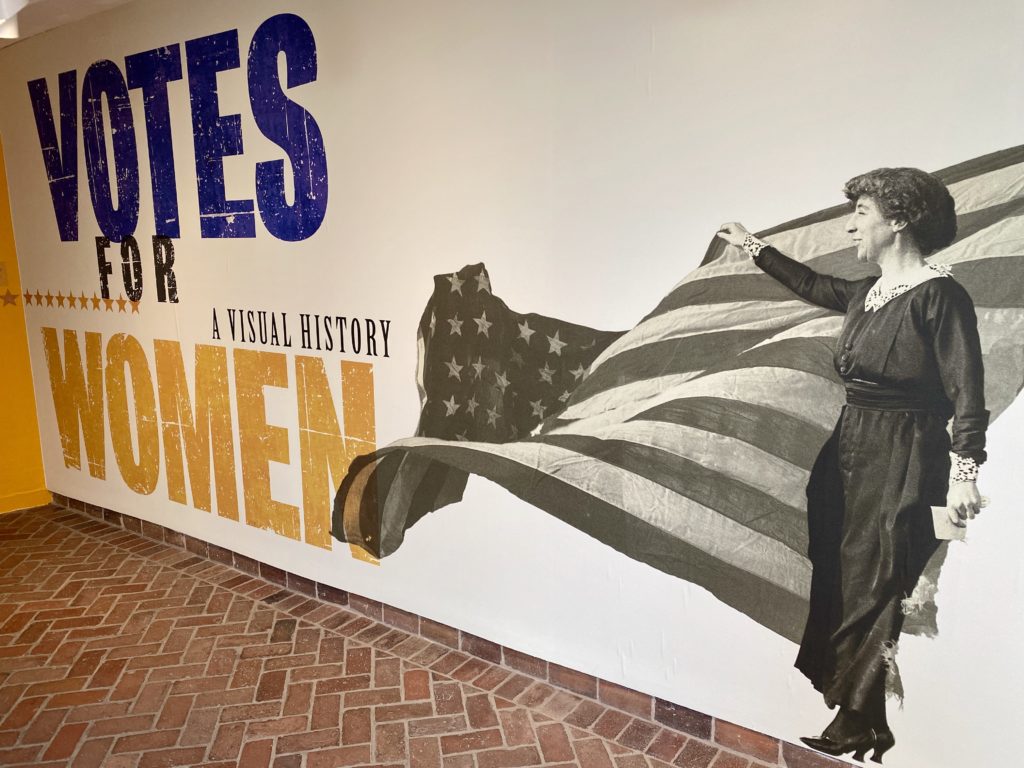
As you weave through the museum’s displays, you are immersed in every form of propaganda imaginable, all used by the Suffragists in an attempt to prove their worth to the American public. Photos of women serving in uniform in WWI. Posters tying women’s suffrage to American ideals of liberty and freedom for all. An array of editorial cartoons, all of which were drawn by women for publication in national magazines and newspapers. Valentine’s Day cards, cheekily promoting women’s suffrage.
Display after display, visitors are transported back in time to the years that these organized, educated and informed women struggled to convince this nation they were worthy of the vote. The Suffragists pleaded, cajoled and laughed both with and at their deniers. But, most of all, through many of those long years of protest, they rallied around Suffragist, Labor Lawyer, and Public Speaker Inez Mulholland’s piercing question: “Mr. President, how long must women wait for liberty?”
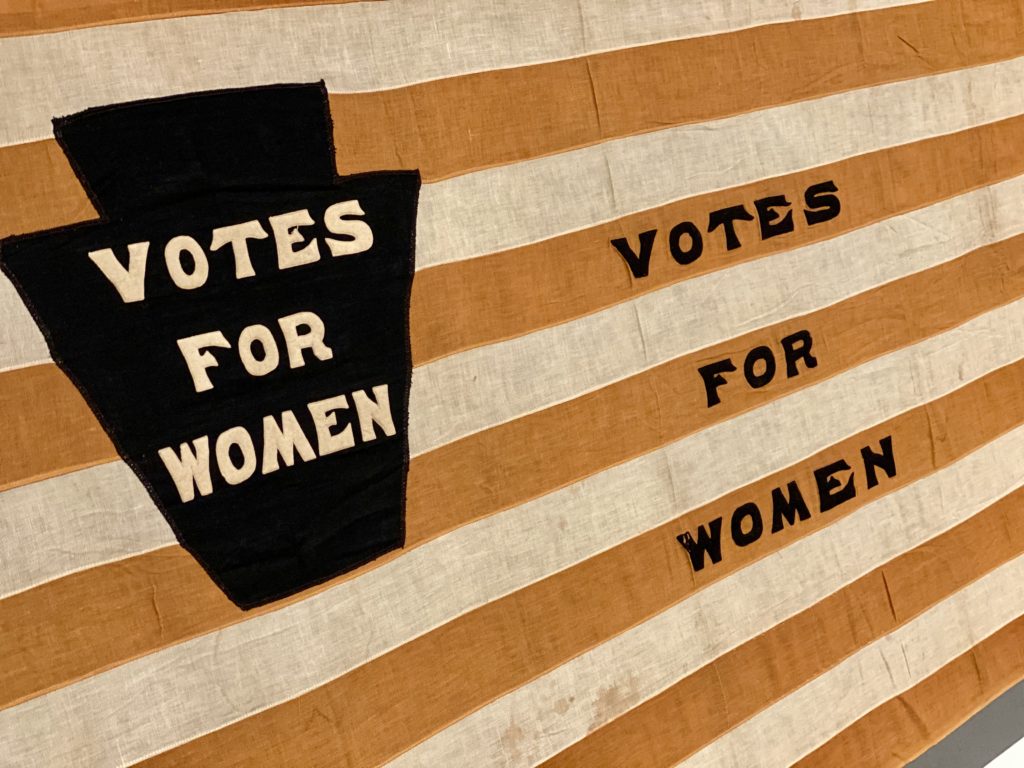
None asked that question louder than the Silent Sentinels, led by Alice Paul. Beginning on January 10, 1917 and continuing over a period of 35 months, more than 2,000 women silently protested in front of the White House. They turned out rain or shine—every day but Sunday. Their signs, most often featuring President Wilson’s own quotes about liberty and freedom, waved in the wind. The women, who were often harassed, spit on, name called, and eventually arrested for their protests, never spoke a word. Rather than pay unjust fines, these women continued their protests in jail, often going on hunger strikes. Eventually, they were subjected to force feedings.
The Silent Sentinels did not stop their protests until June 4, 1919, when the 19th Amendment was passed. On display in the Brandywine’s exhibit, visitors can see a replica of the pin awarded to a hundred of Paul’s Sentinels for their bravery. (Only three of the original 100 pins remain, and are in the Smithsonian.)
As I wandered through the exhibit, the same question kept rumbling around in my brain: why did it take so long? Today, the idea of denying women the right to vote outright seems absurd. It’s hard to align my 21st century mores with 20th century fears.
This exhibit helped answer my nagging questions by including displays of the propaganda used by those opposed to women’s suffrage. Images of men, forgotten at home with crying babies, standing in chaos. Images of ‘promiscuous’ women who have forgotten their families. Images of women who have forgone men’s attentions entirely, drunk on the hedonistic tonic of freedom and equality.
Basically, the dystopian propaganda exhibited suggested that if women were given the right to vote, any sense of order—and civilization as they knew it—would end. For every woman protesting, marching, writing editorials, drawing political cartoons, carrying flags or getting behind the wheel of a brand new invention—the car!—to prove their equal capabilities, there were both men and women afraid of the changes that would come from the women’s vote.
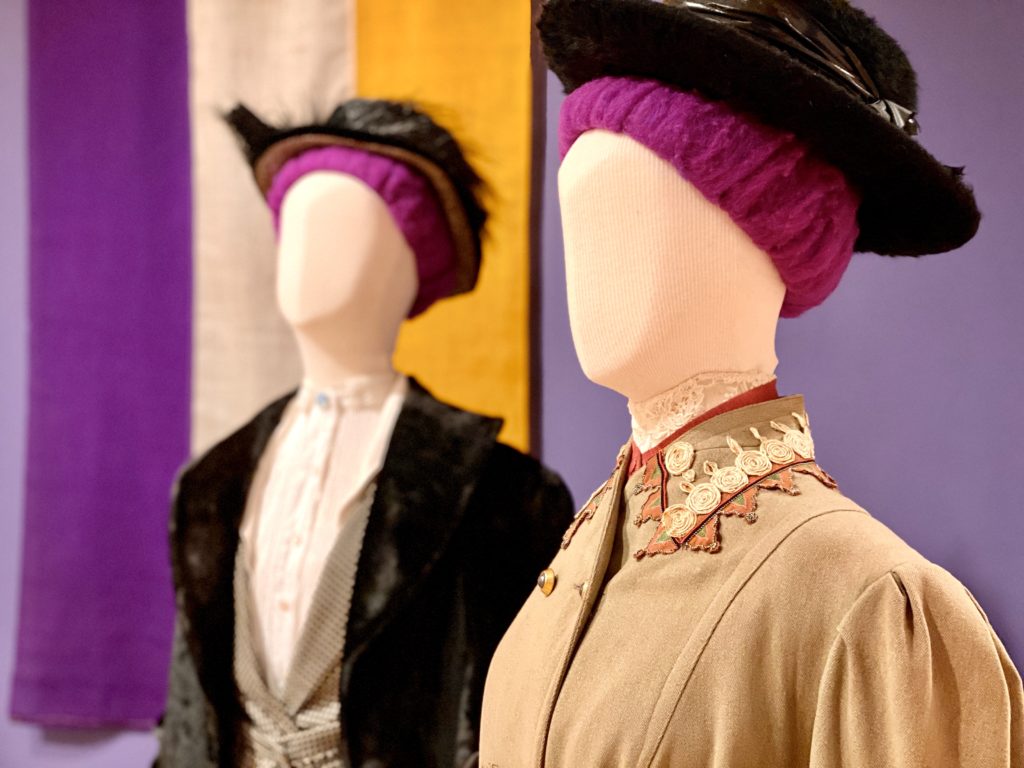
Of course, none of those fears came to pass. Women did not leave their families to vote; women did not destroy their way of life to cast a ballot. Yet, it seems to me that many those afraid of progress have refocused their energies to fight the passage the long-awaited Equal Rights Amendment (since 1923, when Alice Paul first introduced the constitutional amendment!).
As the ongoing fight for gender equality in the U.S. and around the world continues, the Brandywine Museum’s Votes for Women: A Visual History exhibit made me believe that ratification of the ERA is—after so very long—possible. As Suffragist Leader Susan B. Anthony reminded us: “Failure is impossible.”
Votes for Women: A Visual History
Running now through June 7, 2020
Brandywine River Museum of Art
Chadds Ford, Pa.
brandywine.org




